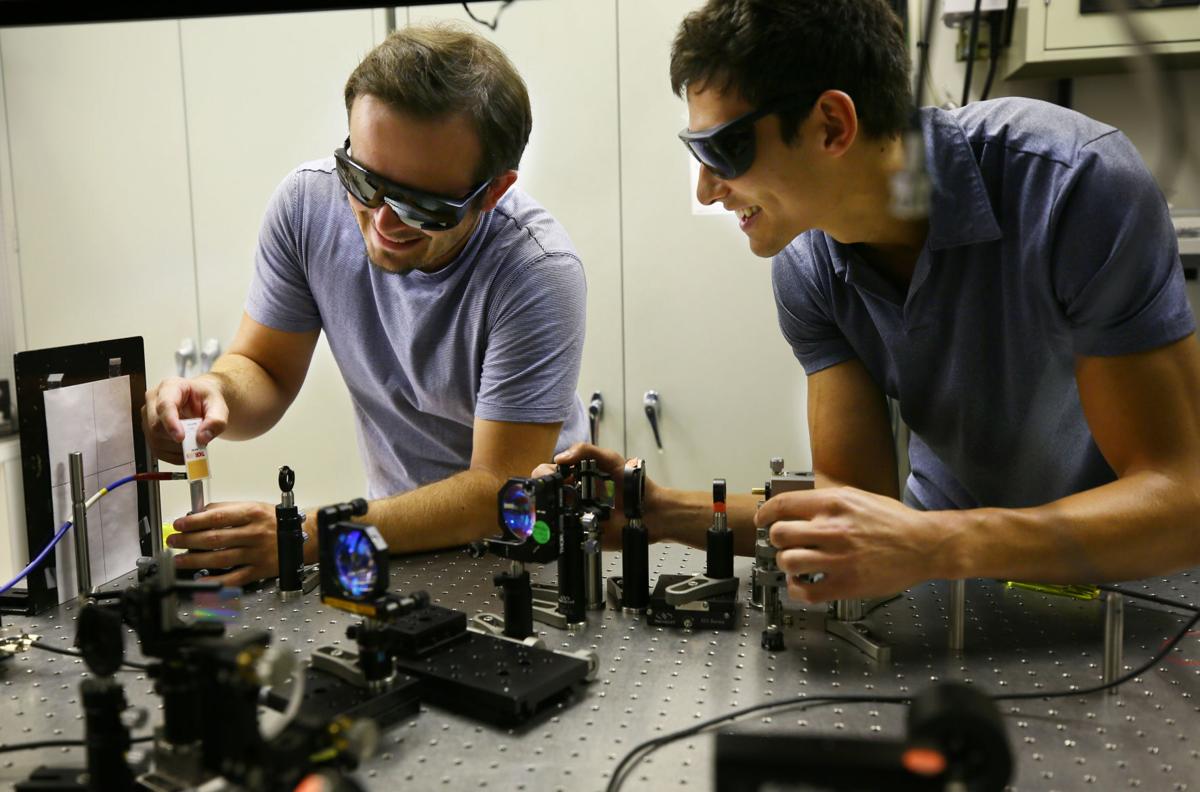A Tucson-based company that has been working on high-power directed-energy systems for two decades has won major new funding from the Navy and Army.
Applied Energetics Inc. recently was awarded a $3.9 million, two-year grant from the Office of Naval Research to develop an optical system “capable of defeating customer-specified threats” for use on Marine Corps platforms.
And following that June 1 award announcement, Applied Energetics was awarded a $172,000 Phase I Small Business Technology Transfer (STTR) contract with the U.S. Army for research and development of a directed-energy system, including an ultra-broadband infrared source as a countermeasure to electro-optical sensors.
The targeted end products under those agreements are unclear, and much of the work remains secret.
But the Pentagon is investing more than $1 billion a year in directed-energy weapons, including mobile lasers to shoot down drones and other aerial threats, and has already fielded a few units for testing.
Applied Energetics has developed an array of patented technologies for ultra-short-pulse lasers and patented “laser-guided energy” systems for military uses, as well as for commercial applications.
Company officials declined to be interviewed without preconditions, but CEO Gregory Quarles said in a prepared response that the competitive Navy grant will allow Applied Energetics to contribute to national security while helping the company to further its research.
“We are honored to have been competitively selected to receive this grant from the Office of Naval Research, which allows Applied Energetics to partner with the U.S. Marine Corps to better support and protect our deployed military personnel and our homeland from a new wave of asymmetric emerging threats,” Quarles said. “Enabling and protecting our defense and national security community is extremely important to us as a company.”
“Additionally, we expect that this program will accelerate our ability to continue making scientific advancements in optical and photonics-based ultrashort pulsed lasers and optical sources supporting the national directed energy portfolio,” Quarles said, citing the recent Army STTR contract to develop infrared-sensor countermeasures using the company’s ultra-short-pulse lasers.
The company’s aim is “to give our military a technological advantage against both improvised and emergent threats,” said Stephen McCahon, co-founder and chief scientist at Applied Energetics.
The military has already tested some laser systems against drones and other aerial threats.
A 50-kilowatt laser system made by Texas-based Raytheon Intelligence & Space and industry partner Kord Technologies and installed on an Army Stryker combat vehicle successfully shot down mortar rounds during testing this past spring.
But Applied Energetics says that the continuous-wave military lasers of up to 100 kilowatts now being tested can take anywhere from seconds to minutes to impact a target.
In contrast, the company says that it has already developed ultra-short-pulse lasers that top 5 terawatts, or trillions of watts, delivered in a pulse of less than a trillionth of a second to producing instantaneous results.
Applied Energetics also has developed a technology known as Laser Guided Energy, that uses a laser to channel a stream of electricity to a target.
The company’s laser-guided energy technologies are protected by 26 patents and 11 additional “Government Sensitive Patent Applications,” which are held under U.S. government secrecy orders and allow AE extended protection rights.
The company, formerly known as Ionatron, won $50 million worth of Pentagon contracts in the 2000s to develop its laser-guided energy technology to defeat improvised explosive devices, or IEDs.
The bomb-zapping system was tested by the Marine Corps in Afghanistan, but the Corps dropped the effort in 2011 after reporting spotty results.
In 2014, Applied Energetics suspended business operations and reverted to “shell company” status, but in 2017 the company announced it was ramping up research and development operations.
In 2019, Applied Energetics acquired Applied Optical Sciences, a company founded in 2010 by McCahon.
Quarles, a physicist well-known in optics circles as former chief scientist for the Optical Society (now known as Optica), also come on board as CEO in 2019.
Last year, Applied Energetics relocated its corporate headquarters to the University of Arizona Tech Park on South Rita Road, taking up space formerly occupied by laser maker Coherent/Dilas that is compliant with international arms-control regulations and includes a 4,800-square-foot, Class 1000 clean room.
Applied Energetics also is on a firmer financial footing, though it has little or no revenue the past two years and has not been profitable since reemerging in 2017.
The company announced in November 2020 that it had repaid or converted all of its existing investor debt into common stock.
And Applied Energetics’ public stock, which is traded on the over-the-counter market, is trading at about $2.50 per share, after falling as low as 66 cents in the past year.





